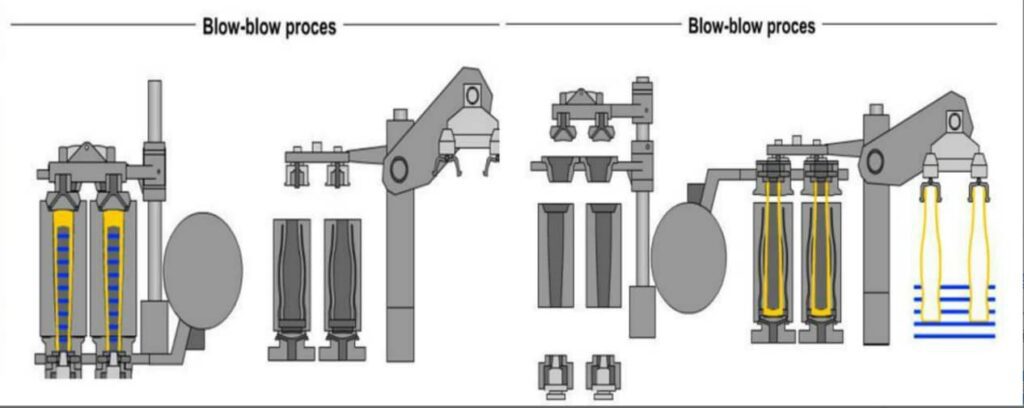HOW TO MAKE GLASS BOTTLES
1-Prepare raw materials

Most of the raw materials used to make glass bottles are sand, soda ash and limestone. Crushed glass is added to this mixture. Crushed glass is broken glass, whether it is waste from the manufacturing process or waste from recycling centers, saving 1300 pounds of sand, 410 pounds of soda ash and 380 pounds of limestone for every ton of glass recycled. This saves on manufacturing costs, cost and energy savings, and allows customers to get an economical price on our products.
2 – Melting of raw glass bottles in a furnace
The raw material and the broken glass are continuously melted at high temperatures, at around 1650°C. The furnace operates 24 hours a day and the raw material mixture is formed into molten glass in about 24 hours. The molten glass is passed through the The glass is then cut into pieces by weight at the end of the forehearth, where the temperature is precisely set.

3 – Glass bottle/jar forming
Two forming methods apply: press-blow or blow-blow, performed in IS machines that

Press-blown glass bottles
The cut drops fall and are pressed into a blank mold with a metal plunger, where it expects the shape of the mold, which is then called the profile blank. Next, the blanks are moved into the final mold and blown into the mold for final measurements. This process is typically used for wide-mouth glass bottles, but can also be used to produce thin-necked glass bottles.
Blown Glass Bottles
Cut drops of material fall and are compressed into the blank mold in blow blow molding, using compressed air to push the drops into place, called a profile blank, which moves to the final mold to be blown again to form the inside of the framed glass bottle. Glass bottles with different neck thicknesses (narrow containers) can be manufactured using a blow-blow arrangement.

4- Annealing in the manufacturing process of glass bottles
After blown glass containers are formed, regardless of the process, they are usually treated with a surface coating.
While they are still hot, in order to make the bottles and jars more scratch resistant, this is called a hot end surface treatment, and then the glass bottles are taken to an annealing furnace where their temperature returns to about 815 °C and then decreases gradually to below 480 °C. This will take about 2 hours. This reheating and slow cooling removes the pressure from the container. This enhances the robustness of the naturally occurring glass containers. Otherwise, the glass can easily break.

